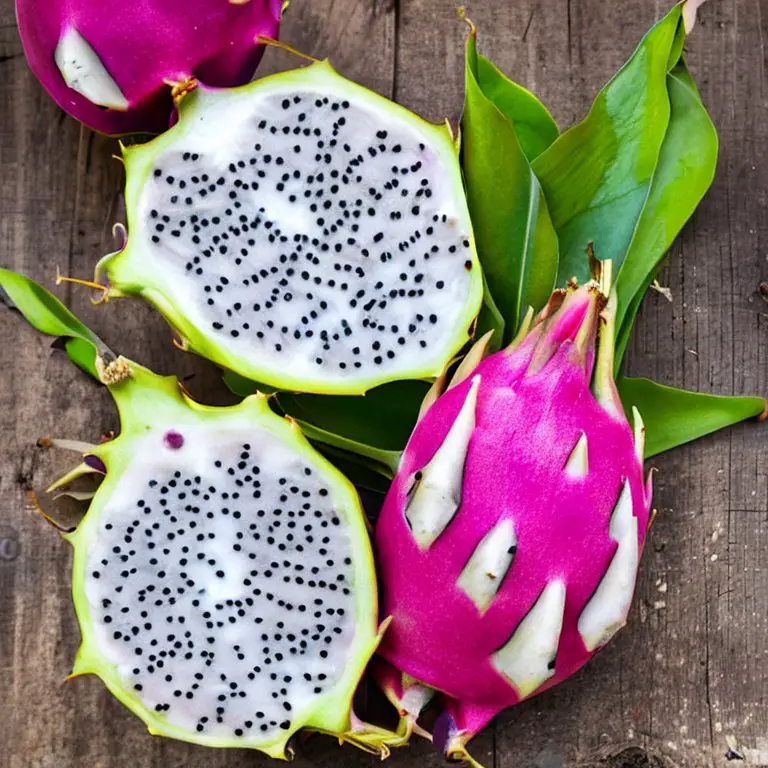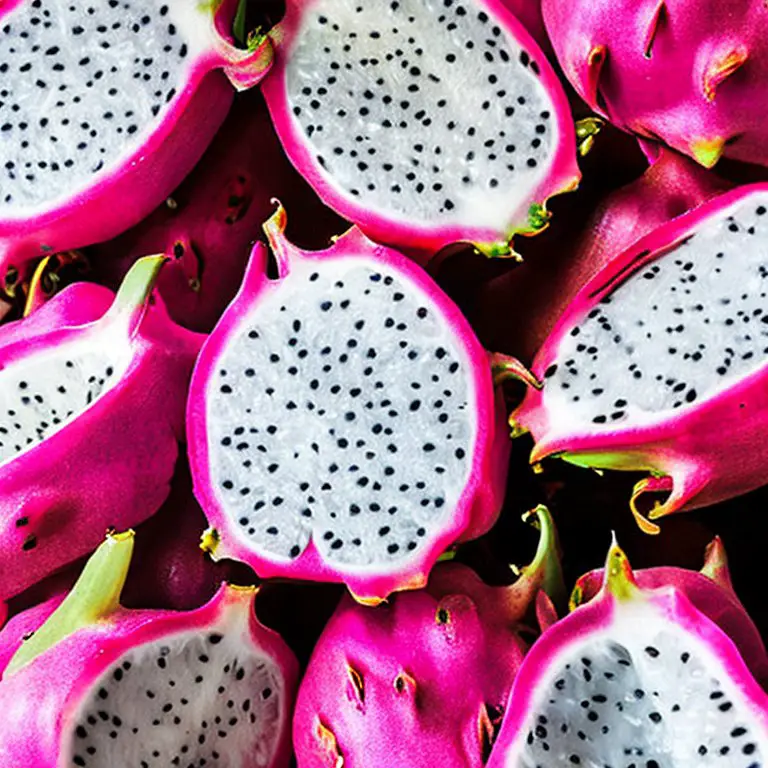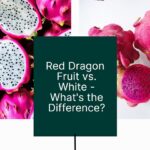
Table of Contents
- Appearance and Varieties
- Nutrition and Health Benefits
- Uses and Culinary Applications
- Growing and Cultivation
- Market and Economic Value
- Sustainability and Environmental Impact
- Final Thoughts
Dragon fruit is a unique and exotic fruit that has become increasingly popular in recent years due to its vibrant appearance and health benefits. Also known as pitaya, this fruit is native to Central and South America but is now widely cultivated and consumed in Asia, particularly in countries like Vietnam, Thailand, and the Philippines.

Appearance and Varieties
The fruit has a striking appearance that resembles a dragon’s scales or a blooming flower. It is typically oblong or oval-shaped and has a bright pink or yellow exterior with green, leafy wings. The outer skin is covered in bracts that are edible but often removed before consumption. Inside, the flesh is white with tiny black seeds that are also edible.

There are three main varieties of dragon fruit: white-fleshed, red-fleshed, and yellow-fleshed. White-fleshed dragon fruit is the most common, with a mild, sweet flavor that is often compared to that of a kiwi. (See What Does Dragon Fruit Taste Like?) Red-fleshed dragon fruit, also known as hylocereus polyrhizus, has a deeper, sweeter flavor with a subtle tanginess. Yellow-fleshed dragon fruit, or selenicereus megalanthus, has a sweeter taste with hints of pineapple and citrus. (See Red Dragon Fruit vs. White)
Nutrition and Health Benefits
Dragon fruit is not only a feast for the eyes but also offers a wide range of health benefits. It is low in calories, with just 60 calories per 100 grams, making it an ideal snack for those watching their weight. It is also high in fiber, with 1.2 grams of fiber per 100 grams, which helps to keep the digestive system healthy and may also lower cholesterol levels.
Additionally, dragon fruit is a rich source of vitamin C, with 100 grams providing up to 30% of the daily recommended intake. Vitamin C is an essential nutrient that plays a crucial role in the body’s immune system, helping to protect against infections and diseases. The fruit also contains other essential vitamins and minerals, including vitamin B6, calcium, iron, and magnesium.
Dragon fruit is also a good source of antioxidants, which help to protect the body against damage from free radicals. Free radicals are unstable molecules that can damage cells and contribute to the development of various diseases, including cancer and heart disease. The antioxidants found in dragon fruit, such as betalains and phenols, help to neutralize free radicals and reduce the risk of disease.
Uses and Culinary Applications
Dragon fruit can be enjoyed in a variety of ways, including raw, cooked, and juiced. The easiest way to enjoy the fruit is to simply slice it in half and scoop out the flesh with a spoon. The flesh can also be diced and added to fruit salads, smoothies, and yogurt bowls.
In Asia, dragon fruit is often used in savory dishes, such as salads and stir-fries. The flesh can be sautéed with vegetables or added to curries for a pop of sweetness. In Vietnam, the fruit is often served with sticky rice and coconut milk for a sweet and creamy dessert.
Dragon fruit can also be juiced to make a refreshing beverage that is perfect for hot summer days. The juice can be mixed with other fruits and herbs, such as pineapple and mint, to create a unique and delicious drink.
Growing and Cultivation
Dragon fruit is a tropical fruit that thrives in warm, humid climates. It is a climbing cactus that grows on a trellis or a post and requires plenty of sunshine and well-draining soil. The fruit typically grows in clusters, with each plant producing several fruits at once.
The plant is relatively easy to grow and can be propagated from cuttings. It can also be grown from seed, although this is less common as the seeds are often sterile.
Dragon fruit plants can grow up to 20 feet long and require support as they mature. The plants produce large, fragrant white flowers that bloom at night and attract pollinators such as moths and bats. Once the flowers are pollinated, they develop into the fruit, which takes between 30 to 50 days to ripen.
Harvesting the fruit requires care as the delicate skin is easily damaged. The fruit is typically picked by hand when it is fully ripe and the skin is bright and firm to the touch. The fruit is then carefully packed and transported to markets and supermarkets around the world.
Market and Economic Value
The popularity of dragon fruit has grown rapidly in recent years, with the fruit becoming a trendy ingredient in many cuisines around the world. The demand for the fruit has led to an increase in production in countries like Vietnam, which is now the world’s leading producer of dragon fruit.
In addition to being consumed fresh, dragon fruit is also processed into a variety of products, including juice, jam, and dried fruit. The economic value of dragon fruit is significant, with the global market for the fruit expected to reach $5.5 billion by 2026.
Sustainability and Environmental Impact
While the cultivation of dragon fruit can provide economic opportunities for farmers in developing countries, it is important to consider the environmental impact of its production. Like other crops, dragon fruit cultivation can have negative environmental consequences if not managed sustainably.
One potential issue is the use of pesticides and fertilizers, which can pollute waterways and harm wildlife. Additionally, the intensive use of water and land resources can lead to soil erosion and deforestation.
To address these concerns, many farmers are adopting sustainable practices such as integrated pest management, water conservation, and organic farming methods. By prioritizing sustainability, farmers can protect the environment while also producing high-quality fruit for consumers.
Final Thoughts
Dragon fruit is a unique and nutritious fruit that has become increasingly popular around the world. With its vibrant appearance, sweet flavor, and numerous health benefits, it is no wonder that this exotic fruit has captured the attention of food enthusiasts and health-conscious consumers alike.
While the cultivation of dragon fruit presents economic opportunities, it is important to consider the environmental impact of its production. By promoting sustainable farming practices, we can protect the environment while also ensuring the availability of high-quality fruit for future generations.
Lance has been passionate about the plant-based diet and we have been following a whole food plant-based diet for over 5 years. We focus on health, natural healing, weight management, animal rights, and the health of the planet and environment by focusing on whole plant-based foods and sustainable practices.
Learn more at the About Me page and follow on social media at the links below.






